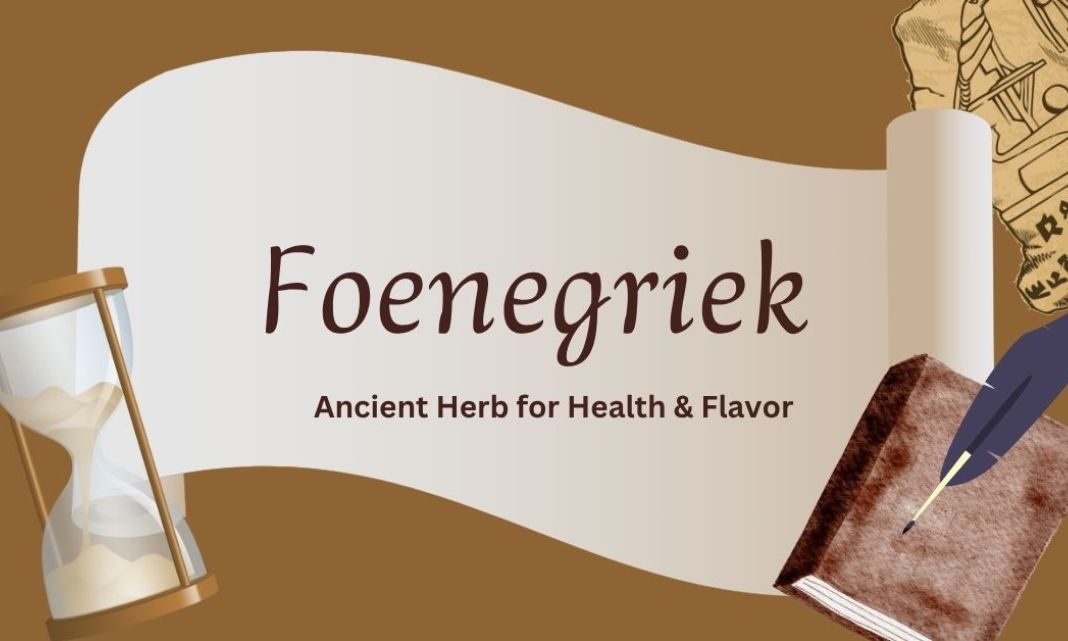What is Foenegriek?
Let’s start simple.
FOH-Nuh-Greek is a special type of plant.
It is also known by its science name: Trigonela Phinum-Graham.
It looks fancy, but don’t worry — you don’t have to say it!
Just remember: Foenegriek is a plant that people use to cook and stay healthy.
It comes from places like:
- Mediterranean (e.g. Greece and Italy)
- Western Asia
- South Asia (like India and Pakistan)
What Does Foenegriek Look Like?
Foenegriek is a small, green plant. It has:
- Small leaves (you can eat them)
- Small yellow flowers
- Hard brown seeds (they are very popular for cooking)
Seeds are the most commonly used part.
They smell small, round, and strong — like maple syrup or a spice store!
What Does Foenegriek Taste Like?
Foenegriek tastes:
- A little bitter
- A little nutty
- Like burnt sugar or curry
Some people say that it tastes like maple syrup!
Mix sugar, nuts, and a small spice together — that’s Foenegriek.
Why Is Foenegriek So Special?
People have used Foenegriek for thousands of years.
It has been a part of:
- Old cooking dishes
- Ancient medicine
- Home remedies
That’s why we call it an ancient herb.
Where Does the Name “Foenegriek” Come From?
The name “Foenegriek” comes from Latin — the old Roman language.
“Phinum-Graham” means “Greek grass.”
Long ago, people used it to feed animals.
But they soon discovered — it’s good for people too!
How Do People Use Foenegriek?
People use Foenegriek in many ways — in food, for health, and even in beauty routines.
Let’s break it down:
1. In Cooking
Foenegriek seeds and leaves are used to add taste to:
- Indian curry
- Middle Eastern stews
- Pickles and sauces
- Flatbreads like naan or fenugreek paratha
You can also fry the seeds to make them less bitter.
Example: In India, people use Foenegriek in a dish called dal, a delicious lentil soup.
2. For Health and Wellness
Foenegriek is like a super assistant for the body.
Here are some health benefits people believe it offers:
- Helps digestion (no more stomach pain)
- Increases milk production in breastfeeding mothers
- May help lower blood sugar
- Helps you feel full (supports weight control)
- Can ease menstrual cramps in women
- May support testosterone levels in men
Think of Foenegriek as a natural vitamin from a plant — not a pill!
Some people also use Foenegriek to:
- Make hair masks
- Treat skin problems
- Make homemade soap or scrub
Its seeds can be soaked in water and used in DIY beauty treatments.
What Are the Nutrients in Foenegriek?
Foenegriek is packed with healthy nutrients:
- Fiber – helps your stomach
- Protein – helps your muscles
- Iron – helps your blood
- Magnesium – helps your body stay calm
- Vitamins A, C, and B6
That’s why it’s called a nutrient-rich herb.
How Do You Use Foenegriek at Home?
Here are easy ways to try Foenegriek in your daily life:
A. Use the Seeds
- Soak overnight and drink the water
- Grind into powder and add to food
- Fry and sprinkle on dishes
B. Use the Leaves
- Cook them in soup
- Dry them and store as herbs
- Mix into flour for bread
Are There Any Side Effects?
Foenegriek is usually safe, but like anything else, too much can be a problem.
Keep in mind:
- Some people may feel stomach upset
- If you’re pregnant, ask a doctor first
- Do not use Foenegriek instead of real medicine
- Always talk to a grown-up or doctor before starting new herbs for health
Funny Facts About Foenegriek
- Ancient Egyptians used Foenegriek in mummy-making
- In ancient times, it was used to treat fever and wounds
- Foenegriek is used in spice mixes like curry powder
- You can grow Foenegriek at home — like a small garden plant!
Summary: Why Everyone Should Know Foenegriek
Let’s recall what we learned:
- Foenegriek is an old herb with roots in cooking and natural medicine
- It has a nutty, maple-like taste
- People use it for flavor, nutrition, and wellness
- It may help with digestion, blood sugar, breastfeeding, and more
- You can use its leaves or seeds in many dishes
Whether you’re a chef, a parent, or someone curious about natural health, Foenegriek is worth knowing!
FAQ About Foenegriek
1. What is Foenegriek used for?
Foenegriek is used for cooking, health, and home remedies. It adds taste to food and may help with digestion, blood sugar, and breastfeeding.
2. How do I eat Foenegriek?
You can eat Foenegriek seeds by roasting or soaking them. You can also use the leaves in soups or bread.
3. Is Foenegriek safe?
Yes, it is usually safe in food amounts. But always check with a doctor before using it for health, especially if you are pregnant or on medication.
4. What does Foenegriek taste like?
Foenegriek tastes slightly bitter, slightly sweet, and a little like walnuts or maple syrup.
5. Can I grow Foenegriek at home?
Yes! Foenegriek is easy to grow in a small pot. Just plant the seeds, water them, and wait for green leaves to grow.
Final Thoughts
Foenegriek is not just a spice — it is a plant full of possibilities.
It’s healthy, tasty, and has been used for thousands of years.
Add a little to your food or wellness routine and see the difference yourself.
If you’re just starting to explore herbs, Foenegriek is a perfect place to begin.

